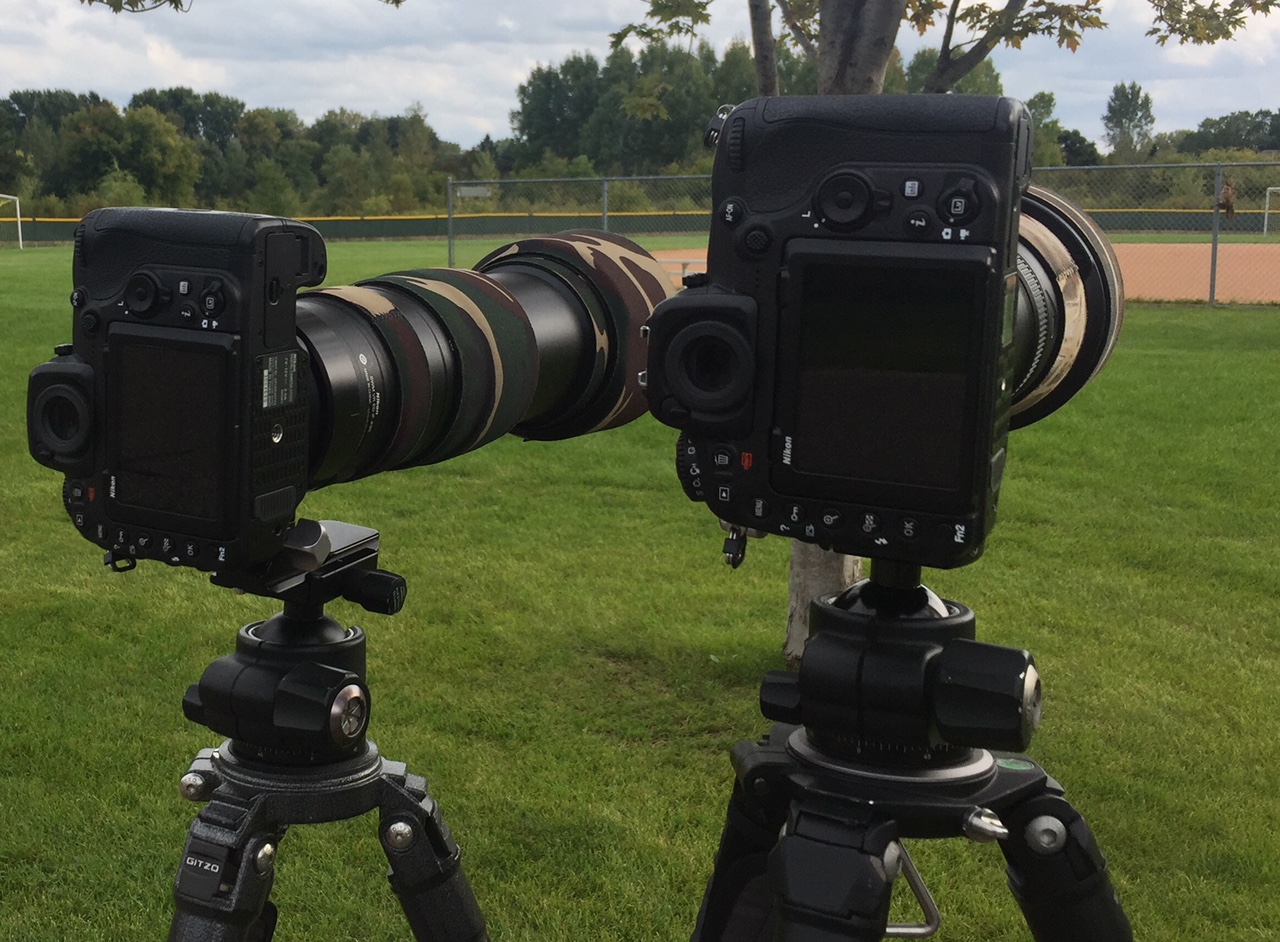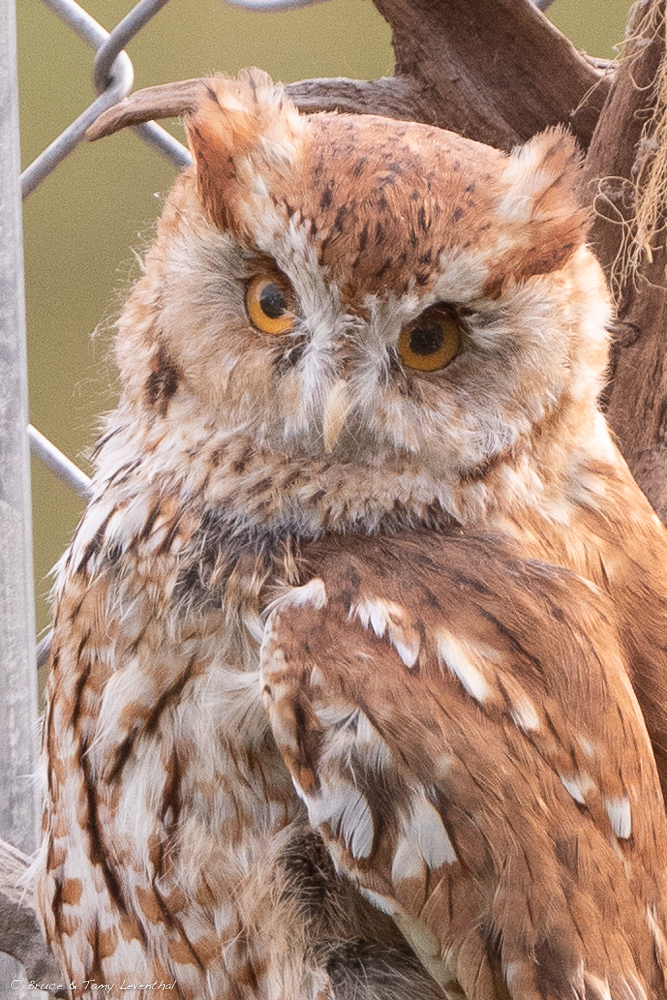While this photo blog focuses more on the process of photography and the ethics of being a nature photographer, every year or so I get the itch to write a gear head / photo geek essay. Years ago, prior to the introduction of the D500, I was inspired by the capabilities of the D7200 (see link) and that seemed to have been a useful post to those who stumbled upon my blog. Today, I’ve decided to share information about a select group of Nikon telephoto lenses with the hope that my experiences may be valuable to present and future readers.
Carpentry - Nikon D500 + Nikon 500mm f/5.6E PF ED VR, ISO 1600
For the sake of disclosure, it is important for you to know that I am not a full time professional photographer who makes a living that is exclusively tied to image production. I am a teacher. I teach high school biology, I teach photography, and I lead photo workshops and seminars in and around Minneapolis Minnesota. I have authored numerous articles, and my work has appeared in books, magazines, and throughout the web. Most significantly, I have a modest income, and my expenditures on photographic gear need to be tempered by what my budget can support. As such, I tend to be a bargain hunter. I am always looking for the best functional performance in new or used gear that can meet the demands of the weekend warrior nature photographer.
Piebald Deer - Nikon D500 + Nikon 500mm f/5.6E PF ED VR, ISO 1600
The impetus for today’s discussion correlates with the introduction of Nikon’s new AF-S 500mm f/5.6E PF ED VR lens. At just over three pounds and less than ten inches long, the thought of shooting and owning an “affordable” super telephoto prime has become something just short of an obsession. So, when my new lens arrived a little more than a week ago, you can only imagine how excited I was. While the 500mm f/5.6PF is not a cheap lens at $3600, it is about $7000 less than Nikon’s premier AF-S 500mm f/4E FL ED VR lens. While I do not own a 500mm f/4 optic, I do have and shoot two other high quality Nikon super telephoto lenses. The lenses I currently own have served my needs in wildlife photography for the past few years, and were used for the majority of wildlife images displayed throughout my galleries on this site.
Great Grey Owl - Nikon D500 + 200-400mm @ 400mm and f/5.6
In 2014 I sold my Canon system and replaced it with Nikon. At the epicenter of my wildlife kit is the AF-S 200-400mm f/4G VR. While the design of this lens dates back to around 2006, it continues to be an extremely versatile and relatively affordable professional tool. The fast f/4 aperture, professional weather sealing, and overall build makes it one of Nikon’s premier lenses. Retailing for around $6500 for the latest model, I bought my lens used for about $2400 at KEH camera. I consider this lens to be one of the greatest bargains for photographers with a modest incomes who want to add a professional lens to their bag. My second wildlife lens actually belongs to my wife and resides within her bag of tricks. The Nikon 200-500mm f/5.6E ED VR zoom is what I call the “gateway drug” into the Nikon system. We bought this lens new for $1400, and it is the bargain of new designed OEM (original manufacturer) super-telephoto zooms. Exceeding its price point by a mile, the 200-500mm f/5.6 is nearly as sharp as my more expensive 200-400mm f/4, and is more versatile, as it reaches all the way out to 500mm. While not weather-sealed to the degree of other Nikon super telephoto optics, this lens has endured days of salt spray in the Salish Sea, winter snowstorms in Yellowstone, Icelandic rains, and the tropical extremes of Costa Rica. Nikon appeared to cut costs by relying on a more modest design, however they seemed to spare little when it came to using high quality glass in an innovative optical formula.
Atlantic Puffin - Nikon D500 + 200-500mm f/5.6 @ 500mm and f/8
So, with the delivery of my new 500mm PF lens, I wanted to know how its overall optical performance compared to my tried and true lenses. With this goal in mind, I borrowed a stuffed screech owl (circa 1958) from my biology classroom and set it up on a fence that surrounds a local ball field. I then positioned a pair of tripods about 40 meters from the target. I mounted the new 500mm PF with a D500 camera to one tripod, and placed my wife’s 200-500mm f5.6 with matched D500 on an adjacent Gitzo (see set-up picture below).
D500 + 200-500VR on the left, D500 + 500mm PF on the right,… owl mount is just visible in the right corner (image taken with an iPhone 6)
Both cameras were set to AFC-S (single spot) and auto ISO. The lenses were pre-set to f/5.6 and the 200-500mm lens was extended to 500mm. I used back-button focus to aim the camera’s center spot on the face of the owl and ripped about 12 photos in intervals of three. I then chose the best frame from each camera/lens and posted them below. To assess sharpness I extracted a 100% crop of the owl’s face and posted these as well. Note, all images were shot in raw, imported into Lightroom Classic, were NOT modified, and were exported using Lightroom’s “standard sharpening for web.”
(Left -> 200-500mm f/5.6E ED VR :: Right -> 500mm f/5.6E PF ED VR… click to enlarge)
The second series of images followed the exact same protocol, but rather than being 40 meters from the target, I moved the cameras closer to the bird at a distance of 20 meters. In addition to the 500mm PF and the 200-500mm VR, I also repeated the protocol with my 200-400mm lens set at 400mm and f/5.6. The series of 6 images are labeled with each lens so you can be the judge of how they all performed.
(Left -> 200-500 f5.6E ED VR :: Middle -> 500 f5.6E PF ED VR :: Right-> 200-400 f4G ED VR… click to enlarge)
As a final point, I realize that this is not a lab test for sharpness. I also recognize that I have done little to suggest anything about the effectiveness of VR, autofocus speed, or hand-holdability. However, as a wildlife shooter who still uses a tripod for 90% of his work, I do think that this simple analysis does suggest something about the optical acuity of the three lens. I leave the final judgement about quality to you and other more tech-minded reviewer… happy shooting…
Buck - Nikon D500 + Nikon 500mm f/5.6E PF ED VR, ISO 1600
©2000-2018 BTLeventhal.com / Bruce & Tamy Leventhal. All rights reserved. No image on this site may be used without permission.












